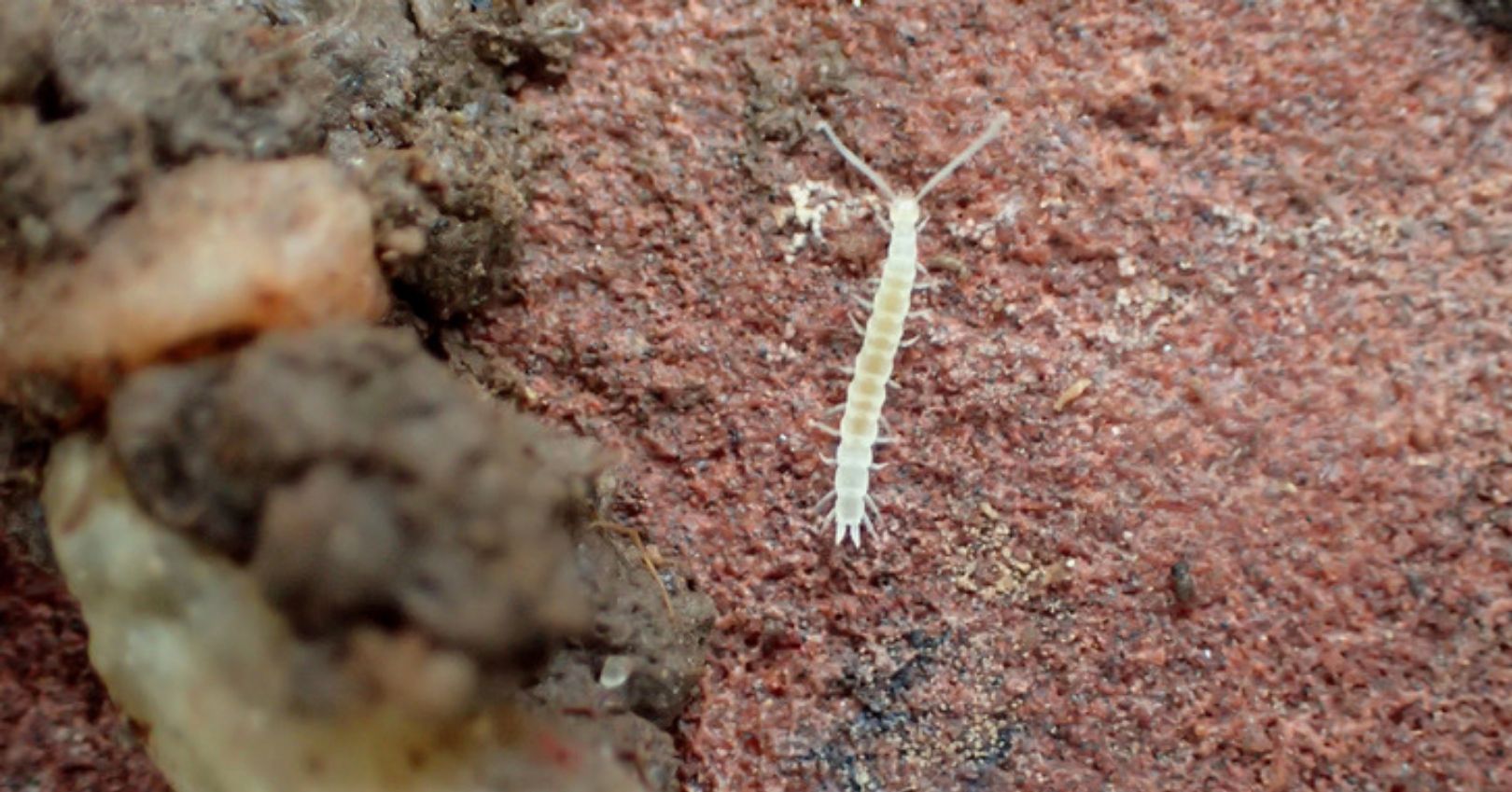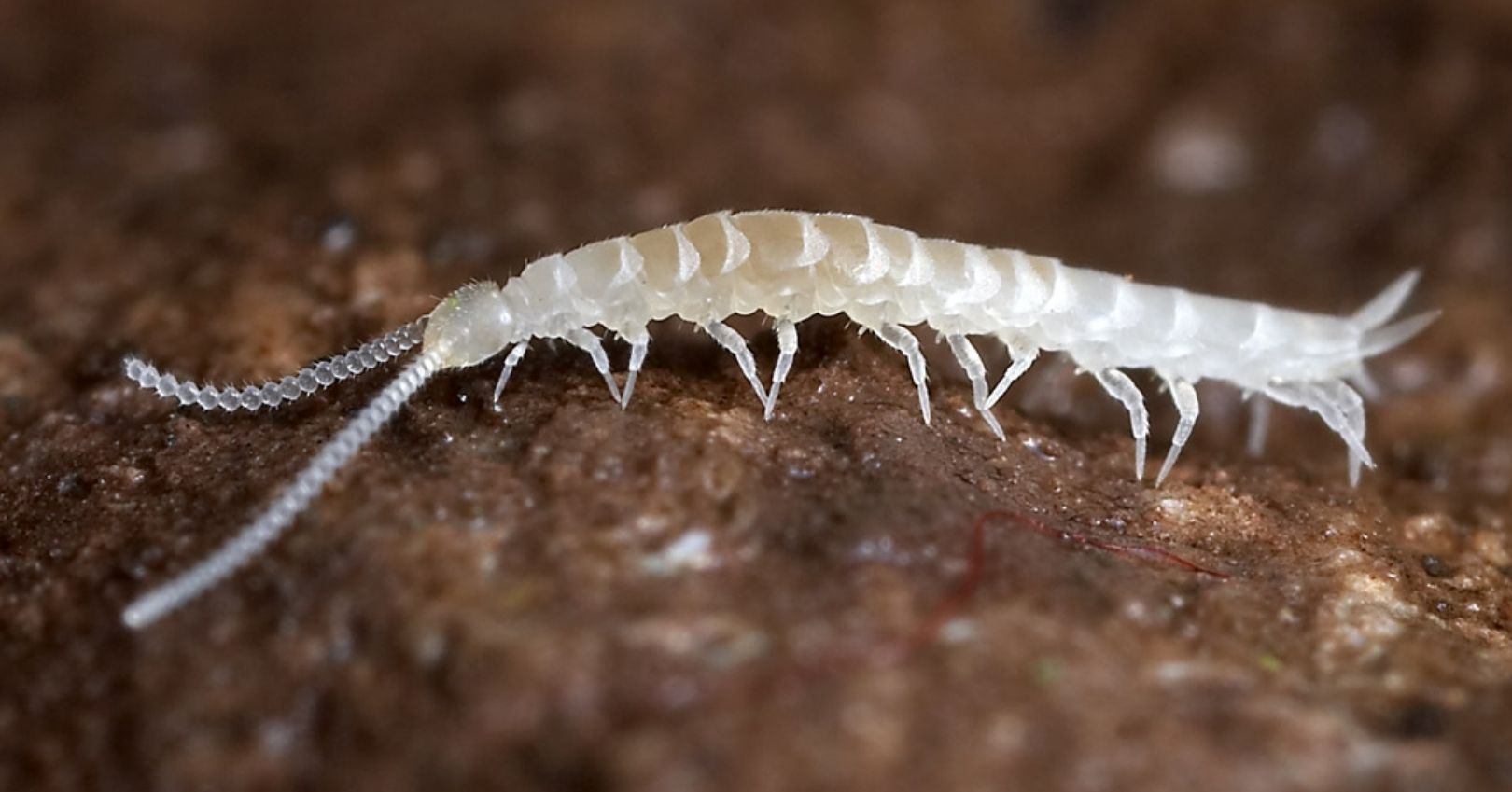Symphylans (Garden Centipede)


Description
Adult: Slender, elongated, “centipede-like,” white with prominent antennae, and 15 body segments with 10- 12 pairs of legs (Fig. 6.47). Egg: Pearly-white and spherical with hexagonal shaped ridges.
Nymph: Similar in appearance to adults but smaller with 6 pairs of legs, adding an additional pair of legs with each molt.
Life History
Adults overwinter in the soil and eggs, adults, and nymphs can be found together in the soil throughout most of the year. The greatest numbers of eggs are usually deposited in the spring and fall. Eggs incubate 25-40 days when temperatures are 50°-70°F, and 12 days when temperatures reach 77°F. First instars emerge from the eggs and go through 7 molts before reaching adulthood. There are 1-2 generations each year.
Damage
Symphylans feed on sprouting seeds and underground plant parts. Feeding damage causes root death on younger roots and a gnarled appearance with corky tissues forming around wound sites on older roots. Damage also includes reduced stands, general stunting, and susceptibility to soilborne plant pathogens. Moderately to highly susceptible crops include broccoli, squash, spinach, and cabbage. More tolerant crops include potato, bean, and small grains, where feeding may not lead to significant damage, even at considerably high population densities. Commonly damaged crops include broccoli, other cole crops, spinach, beets, onions, and squash.
Monitoring
Garden symphylans tend to occur in “hotspots” of a few square feet to several acres. Soil sampling, bait sampling, and indirect sampling are the three main sampling methods used to identify damage and inform management decisions.
Soil sampling is the standard method used for estimating how many garden symphylans are present in a field and is typically done when symphylans are believed to be in the top 6-12 inches of the root zone. Sample units are usually placed on a piece of dark plastic or cloth, where the aggregates are broken apart and symphylans are counted. This method uses variable sample unit sizes including:
- A 1-foot cube
- A 6-inch square, 1-foot deep
- A “shovelful”
- Cores 3-4 inches in diameter and 4-12 inches deep
Bait sampling is typically much faster than soil sampling but has more variable results. Half of a potato or beet is placed on the soil surface and sheltered with a protective cover (e.g., a white pot or a 4-inch PVC cap). After 1-3 days, lift the bait and count first the garden symphylans on the soil and second the garden symphylans on the bait. During cooler conditions, check baits after 3-5 days. During warm and/or dry conditions, check baits after 1-2 days.
Indirect sampling refers to using plant growth as an indirect measure of garden symphylan populations and assessing their spatial patterns. Healthy plants sometimes indicate low symphylan populations, while unhealthy plants sometimes indicate high garden symphylan populations. These measurements help to assess overall patterns of infestation, but should not be used in place of soil or bait sampling.
More information on these methods can be found online in the ATTRA publication “Symphylans: Soil Pest Management Options.”
Management
Sampling (as discussed above) is important in determining management decisions because in most cases, once damage is noticed, little can be done without replanting.
Cultural
- Tilling. This physically crush garden symphylans, thus reducing their populations.
- Rotate crops. Garden symphylan populations decrease significantly in potato crops, even allowing subsequent plantings of susceptible crops in rotation.
- Use transplants instead of direct seed. This, or increasing transplant size, decreases plant susceptibility (not effective for broccoli and eggplant).
Chemical
Noticeable damage often occurs if garden symphylans exceed an average of 5-10 per shovelful in moderately to highly susceptible crops such as broccoli, squash, spinach, and cabbage. In conventional cropping systems, 2-3 garden symphylans per square foot is commonly used as a treatment threshold.
Biological
Although little is known about their effect on symphylan populations, many organisms prey on symphylans including true centipedes, predatory mites, predaceous ground beetles, and various fungi.

